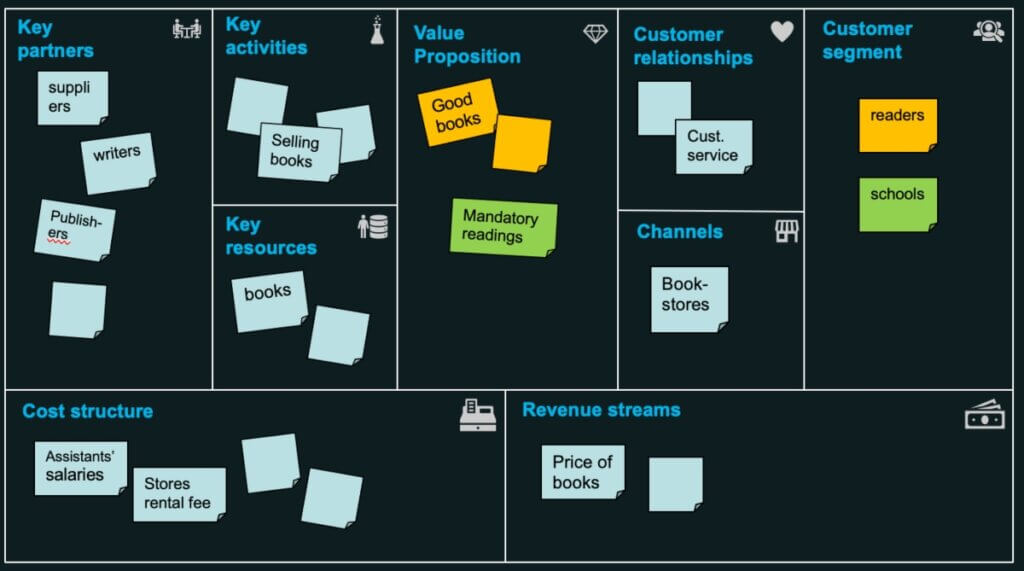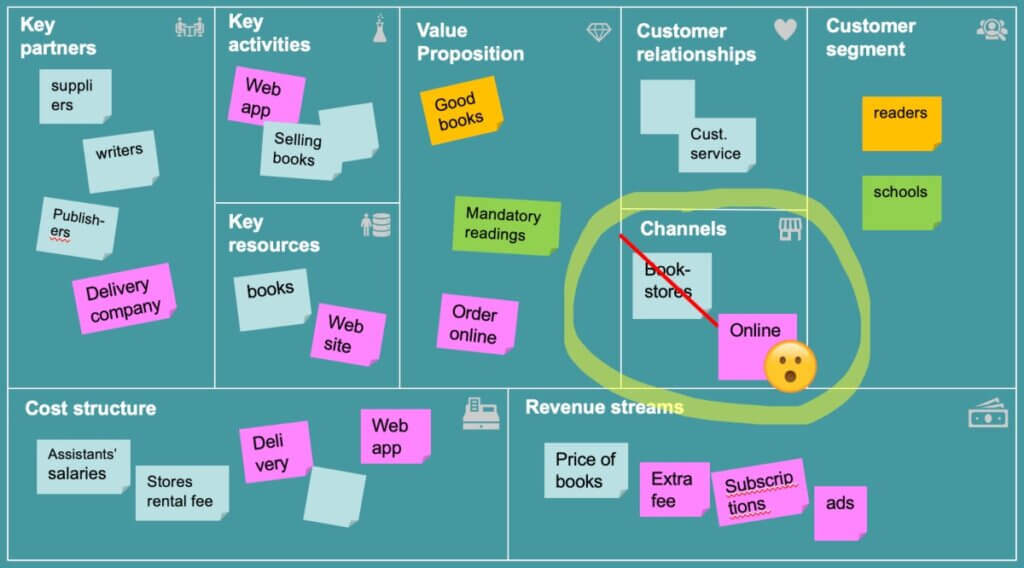4 . Adapt or Think Ahead?
Having the Proper Toolbox in our Hands Is Key to Succeed

By Zsófia Herendi
Do you think those companies that went bankrupt during the pandemic could have done anything to avoid this? Well, I guess in most of the cases no, but definitely there are techniques that can help us to innovate and to come up with new ideas to take advantage of even these kind of hard situations like the pandemic.
There are many companies we can take as an example that came up with great ideas during the past year –not just to somehow keep up until Covid ends but to do even better than they previously did.
For example, in pre-Covid times, would you think that car sales companies will accompany you on test drives via FaceTime? Or that during online shows you could get drinks with one click delivered to your door?
These, as many other innovative ideas, were born because there was an external effect (Covid) that made these companies think about how to go forward, how to keep the business going during these times –or even how to make them better.
But should we always wait for some kind of external trigger that makes us start thinking about innovation?
I firmly believe that with the proper toolbox in our hands we can always look for ways to innovate.
Where does this toolbox come from? Well, for me it is the Domain-driven Design mindset that continuously makes me think from different innovative perspectives.
By definition, Domain-driven Design (DDD) is an approach to design complex systems. However, to me it is something that has the toolbox to facilitate closing the gap between the engineering and business people.
These techniques fit perfectly into the Agile world. In fact, Domain-driven Design and Agile are complementary. What could help more in closing the gap we face in the Agile space than business people and developers working together on a daily basis?
I am working as a Product Manager and one thing that I have been experiencing is that people always expect us –product managers– to know the priorities, no matter what.
Well, I have news to the world: it is a damn hard thing to come up with and know the direction of the product, and accordingly, the prioritization of items in different backlogs.
It can get tricky, especially when the product manager works together with other product managers and multiple engineering teams. A product can only be successful if the prioritization happens alongside the business model and strategy. In that sense, it is advisable to learn about them first and only then should one start any product roadmap discussions.
If you want to learn about the business model and strategy, I believe the best choice might be taking out and using the “Business Model Canvas” technique from the toolbox. At least this is my favorite technique to explore how a company or a specific business area works.

The Business Model Canvas
It is a strategic management template used for developing new business models and documenting existing ones.
The tool is used to visualize all the building blocks when you want to start or describe a business.
It was originally proposed by Alexander Osterwalder to assist businesses to align their activities by illustrating potential trade-offs. The capability to have the complete overview encourages fresh perspectives and ideas about how those pieces fit together.
Through a visual chart, it depicts all the building blocks or elements describing a business:
- Key partners
- Who are your key partners/suppliers?
- What are the motivations for the partnerships?
- Key activities
- What key activities does your value proposition require?
- What activities are important the most in distribution channels, customer relationships, revenue stream…?
- Value proposition
- What core value do you deliver to the customer?
- Which customer needs are you satisfying?
- Customer relationships
- What relationship that the target customer expects you to establish?
- How can you integrate that into your business in terms of cost and format?
- Customer segment
- Which classes are you creating values for?
- Who is your most important customer?
- Key resources
- What key resources does your value proposition require?
- What resources are important the most in distribution channels, customer relationships, revenue stream…?
- Distribution channels
- Through which channels that your customers want to be reached?
- Which channels work best? How much do they cost? How can they be integrated into your and your customers’ routines?
- Cost structure
- What are the most cost in your business?
- Which key resources/ activities are most expensive?
- Revenue stream
- For what value are your customers willing to pay?
- What and how do they recently pay? How would they prefer to pay?
- How much does every revenue stream contribute to the overall revenues?
The easiest way to start is by filling out what you do. This helps keep the focus on your main goal as you fill out the other building blocks of the canvas. From there you can build on that goal and see how it can be achieved by adding details about the other activities and resources you have.
Over time, the Business Model Canvas has been used and adapted to suit specific business scenarios and applications. For instance:
- Product/market fit
- Supply chain
- Cash flow
- Internal communications
- Lean startup and Lean Canvas
But we should not stop here. We are not done yet. We have just mapped out the business model. We need to keep up with changing customer demands and expectations as well. We need to innovate the business. This is the only way we can:
- Compete in a market that is like the blue ocean (untainted by the cut-throat competition), and
- Turn a situation to advantage (for instance the pandemic).
Just think of how Amazon disrupted the market first in 1995: instead of going to the physical bookstore to buy and pick up your books you could order them online and get that delivered by post directly to home.
Let’s just change history and imagine that we are in 1994 (right before Amazon market disruption) owning a huge bookstore chain with many bookstores across the United States. Now we are at a point where we want to boost our business and find out something new. How would we start?
First, we can map out the business model of existing players in the industry using the Business Model Canvas.

Now, we can look at each of the nine sections on the canvas and ask “what could we do differently here?” For example, for the Channels section (this is how a company reaches out and communicates with its customers to deliver their products or services), we can see physical bookstores.
By looking for other channel possibilities, we are likely to think of the internet, especially if we have a diverse group of people with a range of business and technology backgrounds in the room.

See my point here? We can always look and think ahead, we do not just have to always adapt to happenings. So, instead of waiting for an outsider to disrupt your business, you can look at ways to change it yourself!
There are a couple of examples (a non-exhaustive list) from the pandemic times that I really liked:
- The car sales company we talked about at the very beginning of this article accompanying customers to test drives via FaceTime.
- The virtual escape rooms that went online (where people can compete in teams). They also developed a digital game where new college students can explore their campus virtually and compete to answer questions and solve puzzles.
- An entertainment company engaged DJs (and other performers) to do live shows online. During the show viewers can get drinks with one click delivered to their doors.
- An indoor cycling class decided to deliver bikes to homes. And not just bikes but the entire indoor cycling experience.
- A fast restaurant chain found out that there were many restaurants that did not handle online orders and pick up, so they founded this as a service (for picking up digital orders for different restaurants).
In other markets the transformation was a bit more straightforward during Covid:
- Waiters and waitresses at restaurants were the ones who helped in delivering the food. Which basically makes perfect sense to keep the place working and open.
- Personal trainers giving online classes or even gyms opening a new channel online to deliver their classes through live streaming.
Or the businesses that were already online before Covid (or at least partially) faced new kinds of challenges. They needed to deal with an increasing number of orders as people started to order…pretty much everything online. “Click and collect” for instance became very popular for shops that provided delivery but became overloaded with orders.
Many of these companies, who successfully transformed their businesses, are now saying that they are not going to do things the same way as they did before the pandemic.
Certainly, there is one question that keeps popping in my mind: what if they would have ideated on ways for business innovation even before Covid? Would that have brought the same result?
I am Zsófia Herendi and these are my agile-thoughts
2021 © Budapest, HUNGARY by Zsófia Herendi

Zsofia is a product manager, workshop facilitator, conference speaker, Domain-driven Design (DDD) enthusiast and huge fan of diagrams and flows.
She has spent more than 15 years bringing developers and businesspeople together. Skilled modeler with a passion for diagramming and an addiction to optimizing flow.
Always happy to have valuable conversations with people and to share knowledge with other enthusiast professionals. A feedback person both giving and receiving. And a dog lover!
Was it interesting? Share it with others!
